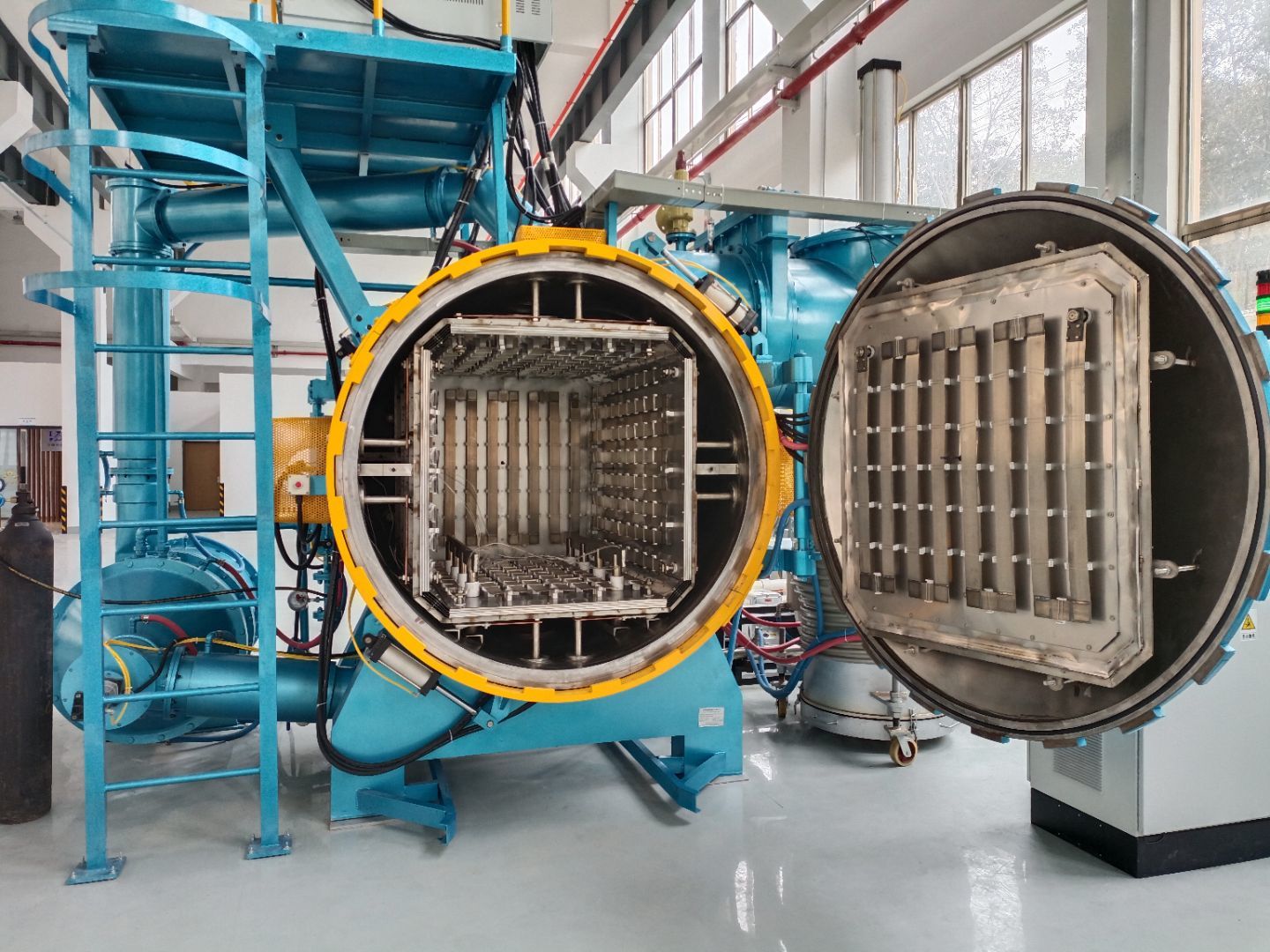
Leak detection in vacuum furnaces
A vacuum furnace is a complex product and the components that make it up must be tested individually before assembly. The vacuum chamber consists of a steel cylinder (vessel) with an inlet hatch and a jacket, suitable for all components, for cooling water circulation. As this is an electric furnace with a high-temperature heating chamber and elastomer sealing gaskets, the water that cools the vessel and associated components keeps each surface at a low temperature (below 150° C). The sealing test of the entire furnace must be carried out in a cold state to avoid introducing water into the jacket. This will make finding any leaks impossible, as water will also block any possible micro-pores and, due to the vacuum, will freeze locally by evaporation, thus preventing the passage of the test gas. If there are leaks in the system, they can be easily understood at an early stage. During thermal cycling, when micro-leaks are present, the treated item will have a coloured sheen rather than the white sheen typical of vacuum treated materials. Unfortunately, the metal surface of articles treated at high temperatures in a vacuum is extremely reactive, and during the cooling phase it traps even small amounts of oxygen in the temperature range where oxides are normally formed (for simplicity, about 600°C). As the furnace continues to be used, even the insulation of the furnace chamber and the heating elements themselves are subject to erosion.
How to perform a leak test in a vacuum furnace.
There are two conditions for leak testing in a vacuum furnace: 1. Insensitive is when the pressurised system is sealed and a ‘sniffer’ is used externally to locate any leaks. As helium is a very light gas (compared to air), it tends to rise. For this reason, the search for leaks must start low and work its way up. In this way, the search sensitivity is reduced because the leak detector is not connected to the device under test, but works with the instrument in a pre-vacuum (suction port between the turbomolecular pump and the pre-pump). This method is typically used when the test assembly will be pressurised and installed in a vacuum chamber under normal operation, such as a tube bundle heat exchanger, prior to effective installation.2. Other conditions under which testing can be carried out include subjecting the system to a vacuum, connecting the leak detector directly to the internal vacuum environment and spraying ammonia outside the vessel. For the same reasons as above. the leak test must start in a high position and then slowly descend. In this way, the risk of ammonia being drawn in from a point other than the spraying position is reduced, as it is assumed that leaks located above the current point have been located and eliminated. This method is combined with testing the chamber under vacuum. In this case, after completing the external leak test by injecting helium from the outside of the vessel to all possible leak points, the jacket is pressurised to check that there are no leaks in the vessel and then the heat exchanger is pressurised to check that there are no leaks.
If the operation is carried out without the necessary waiting step, the instrument can easily be saturated by inhaling ammonia, after which it is necessary to wait for the contaminated sensitive head to be removed from the internal trace of helium. Not everything is as simple as described. In larger systems the signal from the instrument will never reach large values, but will give higher values in the absence of leaks. If the signal does not show any changes in a short period of time, this is already a sign of a good seal. On the other hand, a problem arises when a variable signal is observed, which on the other hand may indicate a very small leak if it is in the range of 1E-8 mbar xls. In this case, it is difficult to interpret the readings of the leak detector. Only an expert will be able to understand whether the uncertainty is caused by degassing of the measuring head or by an effective micro leak. A leaking furnace is unlikely to operate in good condition. It is important to maintain your vacuum furnace through proper maintenance. There are some basic maintenance procedures that must be performed to ensure the vacuum integrity of the furnace.

